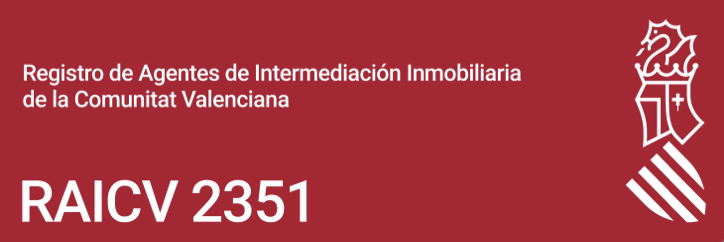Unveiling The Secret To Alicante's Rice Recipes
Call Paella Valencia's sacred food, and you won't be wrong. The dish is surrounded by purity law governing the ingredient, preparation, and serving—including who can share the meal with you. It almost feels like a church rite.
Alicante chefs don't keep to these rules, and it's anarchy from a Valencian point of view. Alicantinos don't even respect the dish ingredient and the symbolic paella pan exclusively used for the cooking. They experiment with ingredients and sometimes toss them in pots, ovens, or as a soup.
Alicante's colorful rice dishes versus Paella in Valencia
The varieties of rice in Alicante are not a coincidence. It reflects a special tradition that suggests Valencians are only good in rice production while Alicantes know how to cook it. Therefore, a large amount of served rice dishes and paella in Murcia, Elche, and Denia have evolved. Here we talk about the entire cultural-historical treatises, features, and recipes of the original paella Valenciana. We want to spotlight the variants of rice dishes from Alicante, particularly the creamy, paella-like variants and those made with oven.
What is the origin of Alicante's rice dishes, fishing boats?
Alicante's version of Valencia's paella includes snail, artichokes, or pork ribs. In addition to this, the majority of the good restaurants in Alicante province offer arroz al senyoret (rice in the way of the fine master) and arroz a banda (rice on edge). Although they look the same, they are two different dishes with different origins. The rice is broken into fine pieces, has a dark golden hue, and forms a caramel-like crust on the bottom of the paella pan. Adding to the allure of the serving is fish and seafood.
Marseille’s bouillabaisse shares similarities with Alicante’s recipe
Interestingly, fishermen make arroz a banda using bycatch—fishes difficult to sell in the market. To spice it up, they add onions they bring with them, garlic, dried round pepper Ñora, and vegetables they buy. Some add potatoes boiled over a coal fire in a saucepan. The broth is used for cooking the rice. The experienced fishermen know the cooking timing of each fish. So, they add the fishes in sequential order to maintain a firm bite as well as give the broth a distinctive flavor.
Alicante's "fine piss" rice without shells and bones
The birth of Alicante arroz al senyoret happened because people from abroad and Madrid wanted their rice without bones, skin scraps, clams, and fish heads. Since the customer is ultimate, the cook decided to give them their request. Before long, families adopted this variation. One of the reasons for this was because parents can feed their children without accident. Also, it was a smart way of introducing children to seafood.
Another interesting variant of arroz al senyoret is arroz negro. The ink of squid, large prawns, crabs, lobsters, and cigalas beautifully decorate the top. Fideuá is another version where small croissant noodles replace rice. While senyoret makes use of stock, Valencian paella does not. This is the major difference between the two. Therefore, the flavor of paella Valenciana comes only from the meat used in the cooking.
The reason why senyoret uses fish stock is that you cannot cook fish and seafood as long as you cook chicken and rabbit. If you do, the seafood will melt into monstrous rubber while the fish degenerates. Sadly, you will find lots of restaurants making this mistake.
Homemade fish as the foundation of rice dishes in Alicante
Fish varieties are the soul of arroz al senyoret. We decided to buy monkfish, which many call ugly. However, its meat is firm enough to survive the rice cooking time. Also, the anatomy provides ample gelatin that makes a strong broth. Consider pairing this with white fish (e.g., sea bream), rockfish, or capellán.
Alicante rice fumet recipe using white fish stock
To make the whitefish stock, cut off all the pieces from the fish that will later become the filler. Put whatever is left in a large pot alongside other animals. For white fish stock, you don't need to roast the shells prior. For every kilogram of leftover fish, add;
- ½ fennel (hinojo)
- 2 carrots (zanahoria)
- 2-3 onions (cebolla)
- 2 stalks of celery (apio verde)
- 3-4 bay leaves (laurel)
- Parsley
- Pinch of salt
- White pepper
- A little swirl of olive oil
Make sure the fish biomass is three-quarters of the entire mixture. The idea is to create a fish broth, not a vegetable broth. While doing this, don't be carried away. Your goal is to create a base for the rice and not stock or soup. Once everything is in the pot, cover it with cold water and heat. Simmer for about 30 minutes and sieve using a finer sieve. Since making the broth leaves a lot of mess in the kitchen, it is wise to make a large amount of them. You can keep the excess in the refrigerator for up to three days. When frozen, it can stay for months.
To make a senyoret for serving four people, you need the following;
- 1-liter fumet
- Finely chopped garlic (3-4 cloves)
- Salt
- Olive oil
Gently heat the paella pan and add saffron (just a few threads or the ink if you are making arroz negro). Heat-dry briefly and add half a teaspoon of sweet paprika powder and two grated tomatoes. Homogenize the mixture and allow to simmer for three to four minutes. Sprinkle two coffee cups of the rice (Valencian round grain variety) and stir well. Add salt to thirst. Pour the stock over the rice. Heat again over high flame for five minutes, then medium flame for another 12 to 15 minutes.
From here onwards, you don't need to stir. Add the seafood and filleted fish according to their cooking point. Rape should go first because it takes 10 minutes to cook. White fishes, shrimps, and salmonete should come close to the end of boiling. Carefully shake them in by agitating the paella panhandle. Cover everything with newspaper or linen cloth and allow to stand for ten minutes.





















